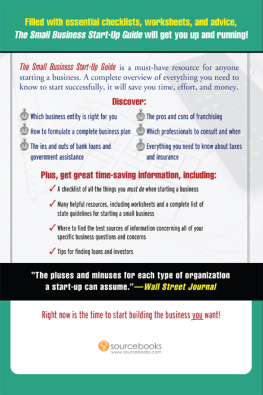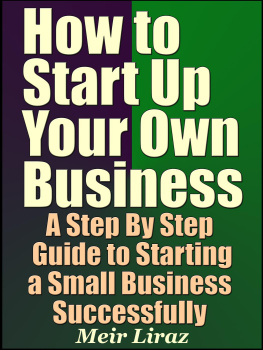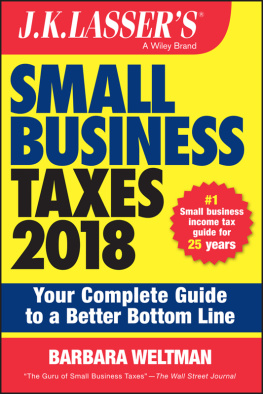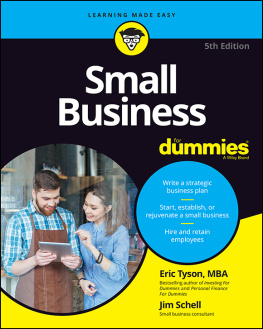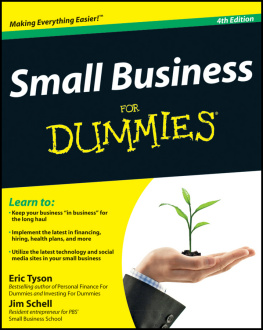
Copyright 2013 by Sourcebooks, Inc.
Cover and internal design 2013 by Sourcebooks, Inc.
Cover photo Image Source/Getty Images
Sourcebooks and the colophon are registered trademarks of Sourcebooks, Inc.
All rights reserved. No part of this book may be reproduced in any form or by any electronic or mechanical means including information storage and retrieval systemsexcept in the case of brief quotations embodied in critical articles or reviewswithout permission in writing from its publisher, Sourcebooks, Inc.
This publication is designed to provide accurate and authoritative information in regard to the subject matter covered. It is sold with the understanding that the publisher is not engaged in rendering legal, accounting, or other professional service. If legal advice or other expert assistance is required, the services of a competent professional person should be sought.From a Declaration of Principles Jointly Adopted by a Committee of the American Bar Association and a Committee of Publishers and Associations
Published by Sourcebooks, Inc.
P.O. Box 4410, Naperville, Illinois 60567-4410
(630) 961-3900
Fax: (630) 961-2168
www.sourcebooks.com
Thompson, Matthew (Business writer)
The small business start-up guide : a surefire blueprint to successfully launch your own business / by Matthew Thompson and Michael Giabrone.Fifth edition.
pages cm
Revision of: The small business start-up guide / Hal Root and Steve Koenig.
Includes index.
1. New business enterprisesUnited StatesHandbooks, manuals, etc. I. Giabrone, Michael. II. Root, Hal, Small business start-up guide. III. Title.
HD62.5.R66 2013
658.11--dc23
2012046646
Contents
Introduction
Small business is the backbone of the American economy. In a sense, it always has been. From the first shopkeepers of the thirteen colonies to the local restaurateurs of today, small business has been the one constant economic force in America. Today, fully one-half of all workers in the private sector are employed by the nations twenty-nine million small businesses.
Since youve picked up this book, its likely that you are one of the millions of Americans employed by a large company, the government, or an agriculture or a nonprofit organization, or you are unemployed and looking for a change. Whatever your reason or current employment situation, you have decided to purchase this bookand by doing so, you have decided to join the small business economic juggernaut. Maybe your business will be part-time and home based. Maybe you will decide to chuck it all and go full-time, sinking all your time and money into it. Whatever you decide, you have picked our book to help guide you through the start-up, and we will do just that.
The Small Business Start-Up Guide is a fact-filled account of the dos and donts of starting a small business in the twenty-first century. The pertinent information is presented without the clutter of gregarious psychological booster material. You can get that somewhere else. However, it is necessary to be serious and excited about your proposed business, which is why we wrote this book in a style that is easy to follow and quick to read.
Although this book is intended for a beginner, an established businessperson also can use it as a reference guide or, better yet, give it to another potential entrepreneur to read. The more people who know the basic facts about starting a business, the better.
What Is a Small Business?
The first eye-opening fact about small business is that theres really not much thats small about it at all. Lets start with the basics: according to the latest figures from the U.S. Small Business Administration, a small business is any independent company that employs fewer than five hundred workers. But small businesses also
Represent 99.7 percent of all employer firms
Employ about half of all private-sector employees
Pay 43 percent of the total U.S. private payroll
Have generated 65 percent of net new jobs over the past seventeen years
Create more than half of the nonfarm private gross domestic product
Hire 43 percent of high-tech workers (scientists, engineers, computer programmers, and others)
Are 52 percent home based and 2 percent franchises
Made up 97.5 percent of all identified exporters and produced 31 percent of export value in the 2008 fiscal year
Produce 16.5 times more patents per employee than large patenting firms
These might be statistics worth remembering when you start thinking youre too small to compete.
Youre considering this option at a fascinating time. The U.S. Census Bureau reported in May 2012 that U.S. business start-ups have been declining since the 1980s, and the number of new small businesses dropped sharply during the 20082009 recession. Does that mean the United States has become less entrepreneurial or more risk averse?
Thats a question for the historians. This book is about you.
On the ground, depending on your ideas and business focus, less competition and more fear among the competition might be a very good thing. First, the advantages and risks involved in starting a small business are not lost on you because you have made the first crucial decision: to go through the processes of starting a successful one. Youre starting the important work right now. Second, the time is right for smart, risk-taking businesspeople to take control of the market. Despite the shaky economy, in some ways there has never been a better time to start a small business.
A Word about Small Office and Home Office Businesses
Small office and home office (SOHO) businessessome call the operators of these businesses homepreneursare ever-increasing parts of the small business mix, and a part you should consider, at least at the start.
Home-based businesses now represent half of all the U.S.-based companies that fit the U.S. Small Business Administrations definition of small business. That means that roughly fifteen million businesses have been formed and are being run by individuals in their homes. Many of these are referred to as microbusinesses, which are companies that have one or two employees overall.
Technology is a huge driver behind the growth of businesses like these. Besides a work space, basic computer and Internet connectivity, and a phone, not much else is needed for most nonmanufacturing businesses to start these days. Even the financial investment in computing has become considerably smaller than it was a decade ago. First, theres whats happening on the hardware side. The actual machinery of computingthe computers themselves, monitors, and printersis moving from desktop to handheld devices. And on the software side, traditional store-bought software CDs are moving toward cloud-based computing (where you essentially log on to a site on the Internet to access the programs you need and dont need to buy physical software at all). Finally, the work itself is moving into a more collaborative, virtual environment thanks to software that more than several people can use at the same time.
In the future, you might be running your business solely from a smartphone or tablet computer. And who knows? The traditional office may be going the way of the dodo.
What This Book Offers
This book provides a walk-through of all the steps to get a business up and running, from visualization to financing to actual start-up. It also provides invaluable back-of-the-book resources that will help you jump-start your business from home or from a commercial space. We really think youre going to like our new resource sections.
Next page
